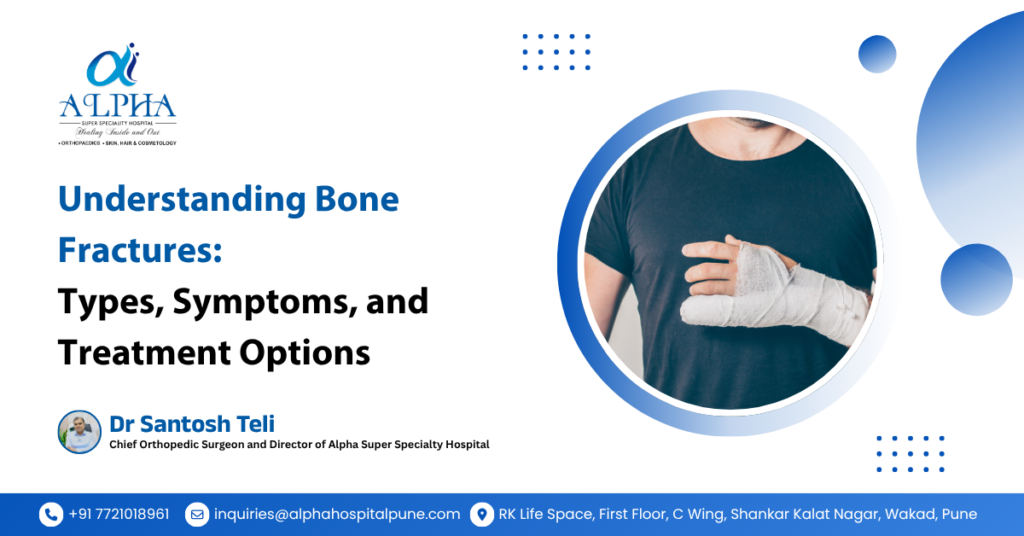Bone fractures are among the most common orthopedic injuries and can affect people of all ages. Whether caused by an accident, fall, or medical condition like osteoporosis, a fracture needs proper diagnosis and timely treatment for complete recovery.
In this blog, Dr. Santosh Teli explains the different types of bone fractures, their symptoms, and the best available treatment options.
What Is a Bone Fracture?
A bone fracture refers to a break, crack, or split in a bone. It can occur due to trauma, repetitive stress, or bone-weakening diseases. Some fractures are simple and heal quickly, while others are complex and may require surgical intervention.
Types of Bone Fractures
- Closed (Simple) Fracture:
The bone is broken, but the skin remains intact. - Open (Compound) Fracture:
The broken bone pierces through the skin, increasing the risk of infection. - Greenstick Fracture:
Common in children, where the bone bends and cracks partially. - Comminuted Fracture:
The bone shatters into multiple pieces due to high-impact trauma. - Hairline (Stress) Fracture:
A small crack in the bone often caused by repetitive strain or overuse. - Pathological Fracture:
Occurs in bones weakened by disease conditions such as osteoporosis or cancer.
Common Symptoms of a Bone Fracture
- Intense pain and swelling at the injury site
- Deformity or unusual angle of the limb
- Bruising and tenderness
- Difficulty moving the affected area
- In severe cases, visible bone protrusion through the skin
If you notice any of these symptoms after a fall or accident, seek immediate medical attention.
Diagnosis
Dr. Santosh Teli emphasizes that accurate diagnosis is crucial for effective treatment.
Diagnostic methods may include:
- X-rays: The most common imaging test to identify the fracture type.
- CT Scan or MRI: Used for complex fractures or when soft tissue damage is suspected.
Treatment Options for Bone Fractures
The choice of treatment depends on the type, location, and severity of the fracture.
- Immobilization:
Plaster casts or splints are used to keep the bone stable while it heals. - Traction:
Used to align bones correctly, especially in the limbs. - Surgical Intervention (Open Reduction and Internal Fixation):
In complex fractures, surgery may be required to insert metal plates, screws, or rods to stabilize the bone. - Physical Therapy:
After immobilization or surgery, physiotherapy helps restore strength, flexibility, and joint movement.
Recovery and Rehabilitation
Bone healing generally takes 6–12 weeks, depending on the fracture type and patient’s overall health.
Dr. Teli recommends:
- Maintaining a calcium and vitamin D–rich diet
- Following the rehabilitation plan strictly
- Avoiding weight-bearing activities until advised
When to See an Orthopedic Specialist
Consult an orthopedic surgeon immediately if you experience:
- Persistent pain and swelling
- Limited movement after initial healing
- Recurrent fractures or bone weakness
Early consultation ensures proper alignment and prevents long-term complications.
Expert Care by Dr. Santosh Teli
At Alpha Hospital, Dr. Santosh Teli, Chief Orthopedic Surgeon, provides advanced fracture management and rehabilitation. With modern diagnostic tools, minimally invasive surgical techniques, and personalized care plans, patients recover faster and regain mobility safely.
Final Thoughts
Understanding the type and severity of a bone fracture is the first step toward complete recovery. With proper diagnosis, timely treatment, and guided rehabilitation, you can return to your normal lifestyle without long-term issues.

